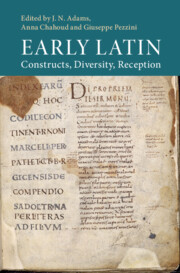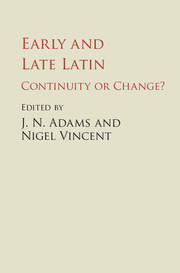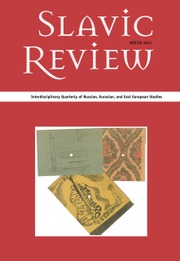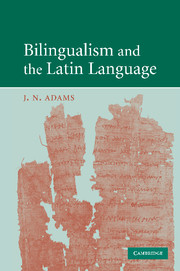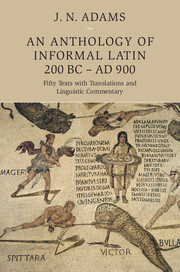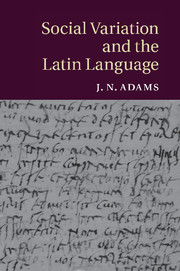Early Latin
This is the most detailed and comprehensive study to date of early Latin language, literary and non-literary, featuring twenty-nine chapters by an international team of scholars. 'Early Latin' is interpreted liberally as extending from the period of early inscriptions through to the first quarter of the first century BC. Classical Latin features significantly in the volume, although in a restricted sense. In the classical period there were writers who imitated the Latin of an earlier age, and there were also interpreters of early Latin. Later authors and views on early Latin language are also examined as some of these are relevant to the establishment of the text of earlier writers. A major aim of the book is to define linguistic features of different literary genres, and to address problems such as the limits of periodisation and the definition of the very concept of 'early Latin'.
- Through close analysis of textual evidence, illustrates the diversity and complexity of what is meant by 'Early Latin'
- Includes twenty-nine original in-depth studies on aspects of the language of literary and non-literary texts, ranging from the earliest Latin inscriptions to the reception of 'early Latin' in the early modern period
- Questions established assumptions on the periodization and development of Latin
Reviews & endorsements
‘It is a great achievement, and I expect it both to be a foundation stone for much further research in this area, and to make a significant intervention into our definition of, and thinking about, Early Latin.’ Nicholas Zair, Bryn Mawr Classical Review
Product details
October 2023Hardback
9781108476584
900 pages
237 × 158 × 39 mm
1.07kg
Available
Table of Contents
- 1. Introduction: What is early Latin? Giuseppe Pezzini and Anna Chahoud
- Part I. General (Morphology, Syntax, Lexicon and Metre):
- 2. Alphabet, epigraphy, and literacy in central Italy in the 7th /5th c. BC Rex Wallace
- 3. Identifying Latin in early inscriptions Simona Marchesini
- 4. The Egadi Rostra, a linguistic analysis Wolfgang D. C. de Melo
- 5. Morphology and syntax in early Latin Wolfgang D. C. de Melo
- 6. Early Latin metre Wolfgang D. C. de Melo and Giuseppe Pezzini
- 7. Greek Loanwords in early Latin James Clackson
- 8. Latin edepol 'by Pollux': background of a Latin aduerbium iuratiuum Brent Vine
- 9. Indirect questions in early Latin Peter Barrios-Lech
- 10. Ecquis in early Latin: aspects of questions Colette Bodelot
- Part II. Authors and Genres:
- 11. Support verb constructions in Plautus and Terence José Miguel Baños
- 12. Early Latin prayers and aspects of coordination James Adams and Veronika Nikitina
- 13. 'Early Latin' lexicon in Terence (and Plautus) Giuseppe Pezzini
- 14. Early Latin and the fragments of Atellana Comedy Costas Panayotakis
- 15. A comparison of the language of comedy and tragedy in early Latin drama Robert Maltby
- 16. The language of early Latin epic Sander Goldberg
- 17. How 'early Latin' is Lucilius? Anna Chahoud
- 18. Repetition in the fragmentary orators: from Cato to C. Gracchus Christa Gray
- 19. Greek influences on Cato's Latin Neil O'Sullivan
- 20. Some syntactic features of Latin legal texts Olga Spevak
- Part III. Reception:
- 21. Lucretius and early Latin Barnaby Taylor
- 22. Cicero and early dramatic Latin Gesine Manuwald
- 23. Early Latin texts in Livy John Briscoe
- 24. Pliny rewrites Cato Cynthia Damon
- 25. Gellius' appreciation and understanding of early Latin Leofranc Holford-Strevens
- 26. Views on early Latin in grammatical texts Alessandro Garcea
- 27. Nonius Marcellus and the shape of early Latin Jarrett Welsh
- 28. Early Latin to Neo-Latin: Festus and Scaliger Anna Chahoud
- Conclusions:
- 29. Early Latin as a Concept James Adams.

